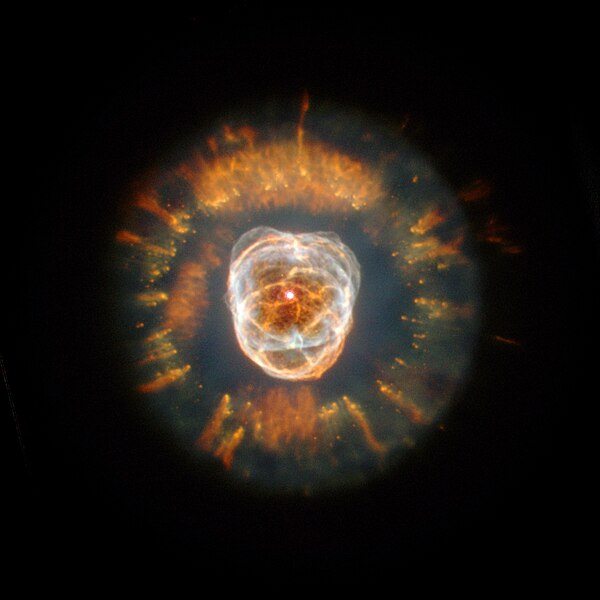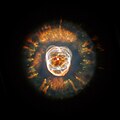Bestand:Ngc2392.jpg
Uiterlijk

Grootte van deze voorvertoning: 600 × 600 pixels. Andere resoluties: 240 × 240 pixels | 480 × 480 pixels | 768 × 768 pixels | 1.024 × 1.024 pixels | 1.500 × 1.500 pixels.
Oorspronkelijk bestand (1.500 × 1.500 pixels, bestandsgrootte: 1,16 MB, MIME-type: image/jpeg)
Bestandsgeschiedenis
Klik op een datum/tijd om het bestand te zien zoals het destijds was.
| Datum/tijd | Miniatuur | Afmetingen | Gebruiker | Opmerking | |
|---|---|---|---|---|---|
| huidige versie | 28 jul 2005 14:34 |  | 1.500 × 1.500 (1,16 MB) | Startaq | |
| 1 feb 2005 19:20 |  | 320 × 259 (12 kB) | CWitte | Eskimo nebula |
Bestandsgebruik
Dit bestand wordt op de volgende 2 pagina's gebruikt:
Globaal bestandsgebruik
De volgende andere wiki's gebruiken dit bestand:
- Gebruikt op af.wikipedia.org
- Gebruikt op ar.wikipedia.org
- Gebruikt op arz.wikipedia.org
- Gebruikt op ast.wikipedia.org
- Gebruikt op az.wikipedia.org
- Gebruikt op be.wikipedia.org
- Gebruikt op bg.wikipedia.org
- Gebruikt op bn.wikipedia.org
- Gebruikt op bs.wikipedia.org
- Gebruikt op ca.wikipedia.org
- Gebruikt op ce.wikipedia.org
- Gebruikt op cs.wikipedia.org
- Gebruikt op cv.wikipedia.org
- Gebruikt op da.wikipedia.org
- Gebruikt op de.wikipedia.org
- Gebruikt op diq.wikipedia.org
- Gebruikt op el.wikipedia.org
- Gebruikt op en.wikipedia.org
- Planetary nebula
- Compact object
- Eskimo Nebula
- List of planetary nebulae
- User:Anticipation of a New Lover's Arrival, The/Galleries/Awards
- Caldwell catalogue
- Herschel 400 Catalogue
- User:Reginhild
- Wikipedia:Featured picture candidates/May-2007
- Wikipedia:Featured picture candidates/Eskimo Nebula
- User:Reginhild/Userboxes/Space Scientist
- Gemini (constellation)
Globaal gebruik van dit bestand bekijken.

